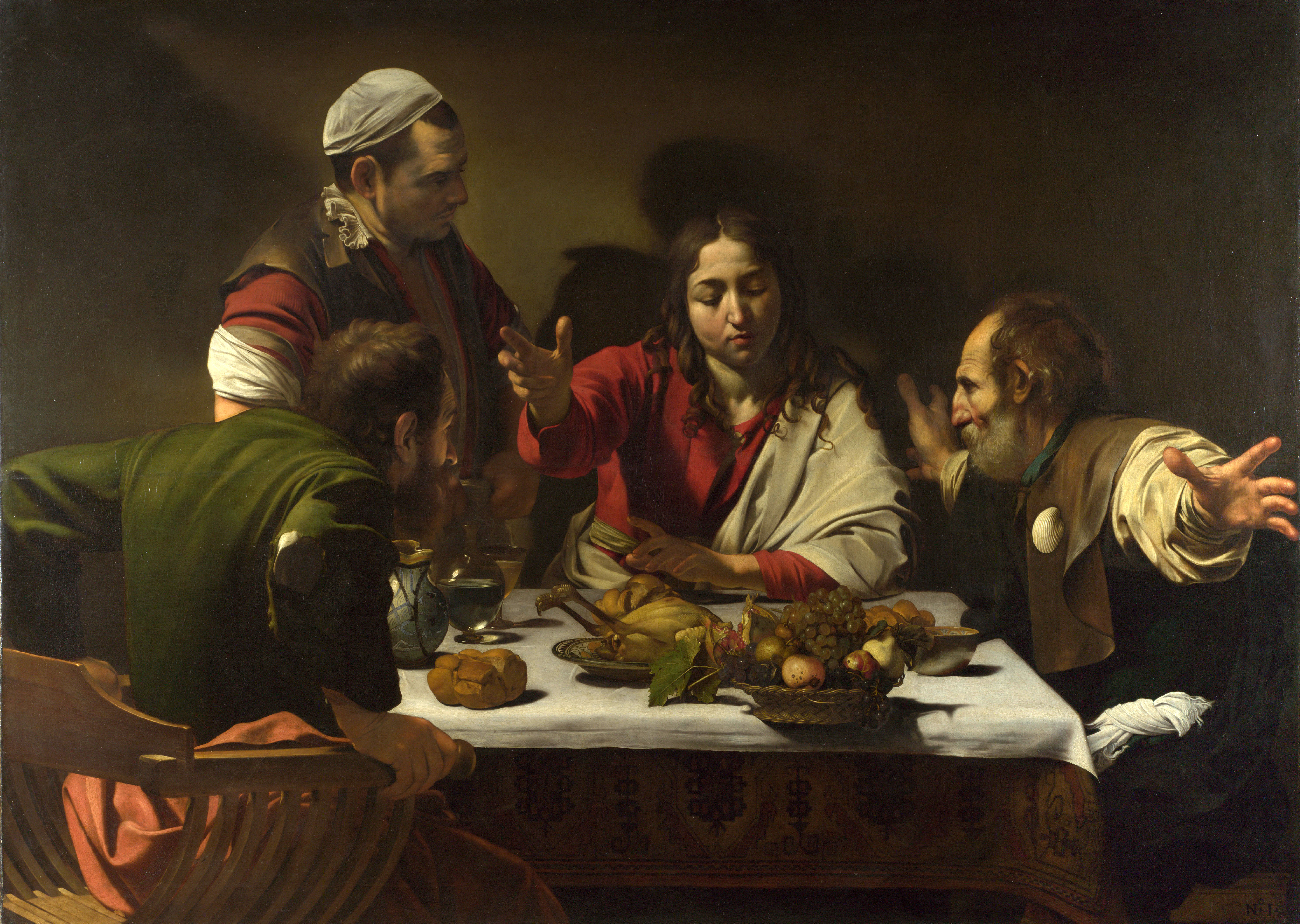It’s a very physical picture. The light and the shadows behind Jesus are often remarked upon, and they’re stunning, but equally obvious is the food on the table – chicken and fruit and water, portrayed in great detail, as well as bread and wine. This is not a ritual re-enactment of the Last Supper with cubes of white sliced bread or tasteless little wafers. This is real food, a real meal.
Then there’s the people. They are not picture postcard people. They are not symbols or abstractions. They’re real, grounded people.
There’s Jesus. He’s strikingly pretty, a young girlish face. Composed yet tender, flowing locks. Yet he’s not the tender-Jesus-meek-and-mild of Victoriana. There’s power in him, and a really strong sense of sadness.
The two disciples are much older than him, a whole generation older. The gospel names one as Cleopas, and while modern biblical scholarship suggests that the other might be Cleopas’ wife, both figures are male in this picture, both with ample beards (Jesus is clean-shaven).
One has arms stretched wide, a gesture which the National Gallery interpretation sign suggests is astonishment, but is also an echo of Christ’s arms outstretched on the cross. He’s wearing a scallop shell, later the symbol of pilgrims. He could be about to pronounce a blessing himself, or to emulate Christ’s sacrifice (as so many of the disciples did). Flippantly, his gesture also reminds of the fisherman showing how big was his fish that got away – though of course Jesus’ disciples knew a thing or two about fish.
The other disciple has his back to us, and is rising from his chair. Not so much to say about him. He looks more dishevelled than his friend – his clothes are slightly torn, he has a sense of disorder about him. The troubles of the past few days must weigh heavy on him.
And then there’s a third man, standing behind Jesus. He’s younger, wears a cap, with just a small beard. He’s listening just as intently as the other two, though gives the impression of not being so much part of the meal, if only because he’s not sitting at the table. Perhaps he is the innkeeper, a sudden extra witness to the teaching and the blessing and the revelation?
I don’t know which of the three figures are actually intended to be the two disciples mentioned in the gospel story, and why Caravaggio portrayed three figures. But the gospel story is never complete. There were always things going on not discussed in the story. Why should there not be a third figure?
Caravaggio shows us an ordinary scene, with ordinary food being eaten by ordinary people in an extraordinary situation. Emmaus was a revelation, but it was a revelation within the everyday, that happened to people who had other lives and other stories. Life continues, and the amazing things happen in its midst.


